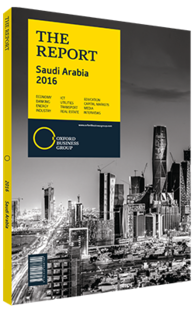Saudi Arabia's domestic retail manufacturers increasingly competing with international players
In mid-July 2016 YouGov, a UK-based market research firm, released the results of its latest survey of the most popular brands in Saudi Arabia. At the top of the firm’s 2016 Mid-Year BrandIndex BestBrand Rankings was Almarai, a Riyadh-based food and beverages producer that bills itself as the world’s largest vertically integrated dairy company. In the past few years Almarai has moved steadily up the survey’s rankings, due largely to the success of a series of digital videos the firm has released via social media.
As recently as the end of 2014 the company was ranked fifth on the BestBrand survey, which measures the reputation of more than 300 brands based on daily questionnaires completed by 150 respondents across the country. When Almarai took the number one spot in the rankings for the first time in January 2016 – displacing Samsung, which had been ranked as the most popular brand in the Kingdom for the preceding three years – it became the first domestic firm to top YouGov’s rankings in the country since the survey was launched in 2011.
In Flux
The ascent of Almarai is indicative of the rising power of domestic retail brands in Saudi Arabia. This marks a sea change in the Kingdom, where international manufacturers have dominated the retail landscape for decades. Since at least the early 2000s, high oil prices, a large youth population, a booming national economy and the widespread uptake of IT have contributed to rapidly expanding demand for international technology and luxury brands, in particular. As of the end of 2015 some 66% of Saudi Arabia’s total population was between the ages of 15 and 59, and the median age was 29 years, Abu Dhabi-based The National reported in January 2016.
According to Arabian Centres, a major domestic mall operator, in 2015 Saudi Arabia was home to one of the fastest-growing retail sectors in the world, with 11% annual expansion. Similarly, consumer spending was reportedly up 18% year-on-year in 2015, despite the challenging domestic macroeconomic situation and downward pressure on budget expenditure.
A handful of key retail segments have shown themselves to be particularly popular in the country in recent years, including food and beverages, clothing and automobiles, among others. Indeed, according to market research firm Euromonitor International, annual sales of apparel and footwear are expected to grow by 60% in the Kingdom by 2021.
The property firm JLL also forecast new retail space growth of around 45% in Riyadh alone by 2019. Second-tier cities across the Kingdom have also seen an influx of new retail spending recently. “B-level cities are currently underserved and offer populations with good purchasing power,” Muhammed Al Agil, the CEO of the Saudi Arabia-based company Jarir Investment, told OBG. “This is a clear area of expansion in the retail segment in Saudi Arabia.”
Local Focus
Many local players expect domestic brands to play an increasingly important role in the growth of the retail segment for the foreseeable future. While Almarai’s rise to the top spot on YouGov’s most recent survey was widely cited as evidence of this shift, other changes in the mid-2016 BestBrand rankings were also telling in this regard. Saudi firms made up three of the top-10 most popular brands in the Kingdom, according to YouGov. In addition to Almarai, Al Baik, a Jeddah-based fast-food chicken restaurant chain, came in at fifth place on the list, down from fourth place in the end-2015 rankings. Meanwhile, Saudi Arabian Airlines, the Kingdom’s flag carrier, was a new entrant to the list at sixth place.
A handful of other local firms have begun to compete with international brands in recent years. Alshiaka Company, a men’s clothing manufacturer, was named the most popular Saudi brand in 2015 in a survey by daily newspaper Al Watan, while Tima, a women’s activewear brand aimed specifically at Saudi and Arab women, has also seen significant success.
You have reached the limit of premium articles you can view for free.
Choose from the options below to purchase print or digital editions of our Reports. You can also purchase a website subscription giving you unlimited access to all of our Reports online for 12 months.
If you have already purchased this Report or have a website subscription, please login to continue.

